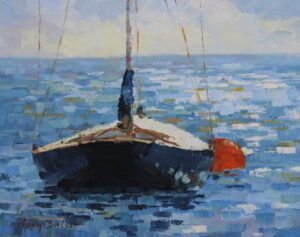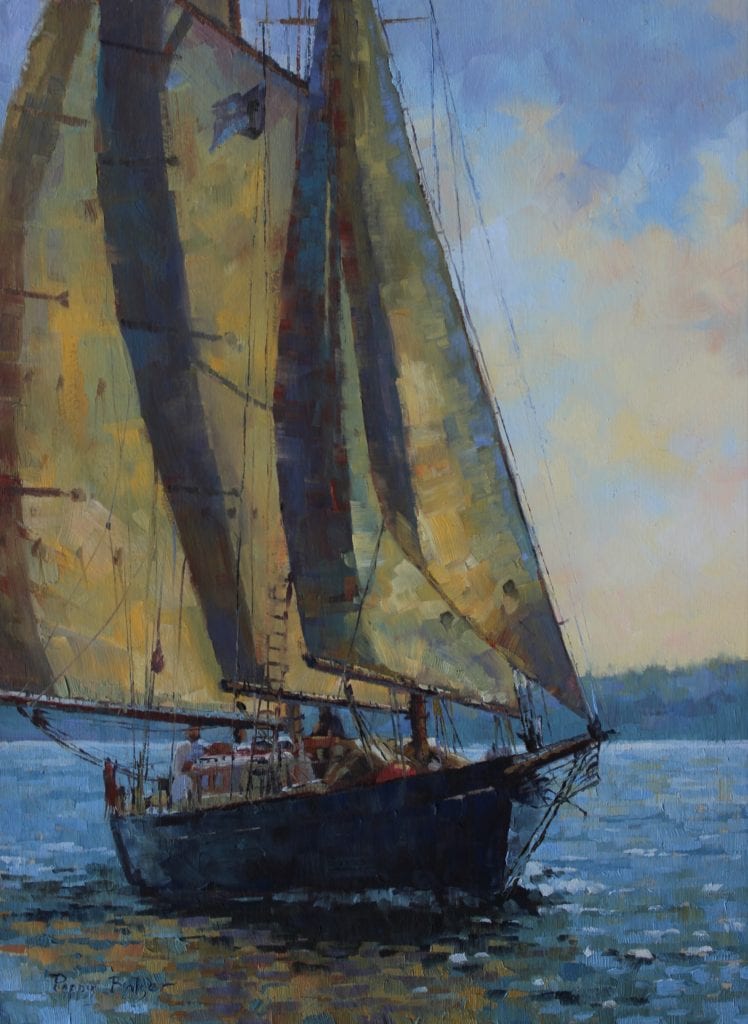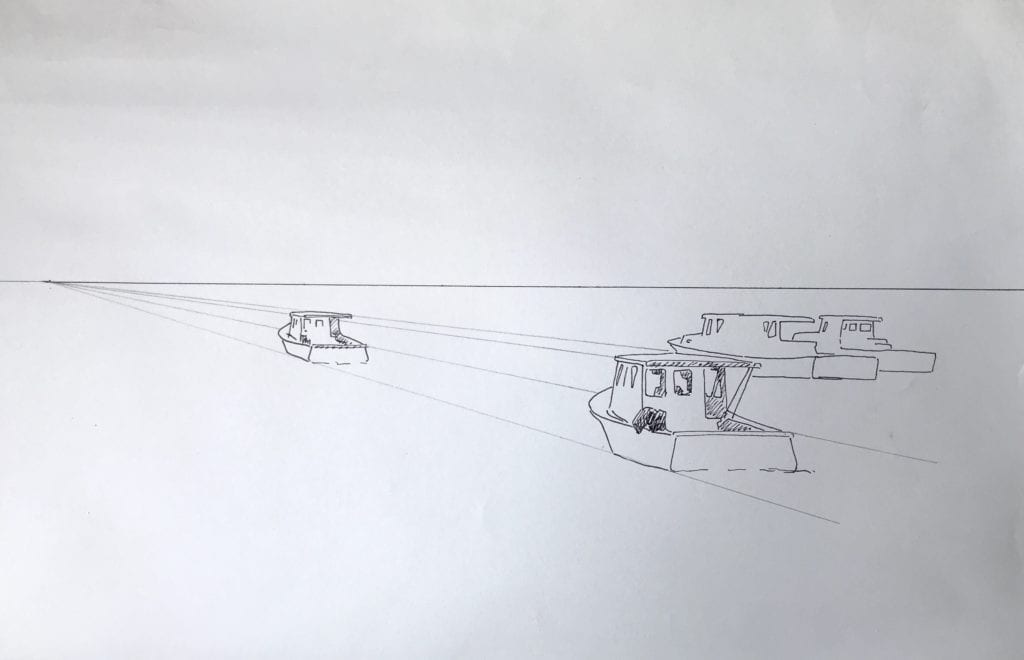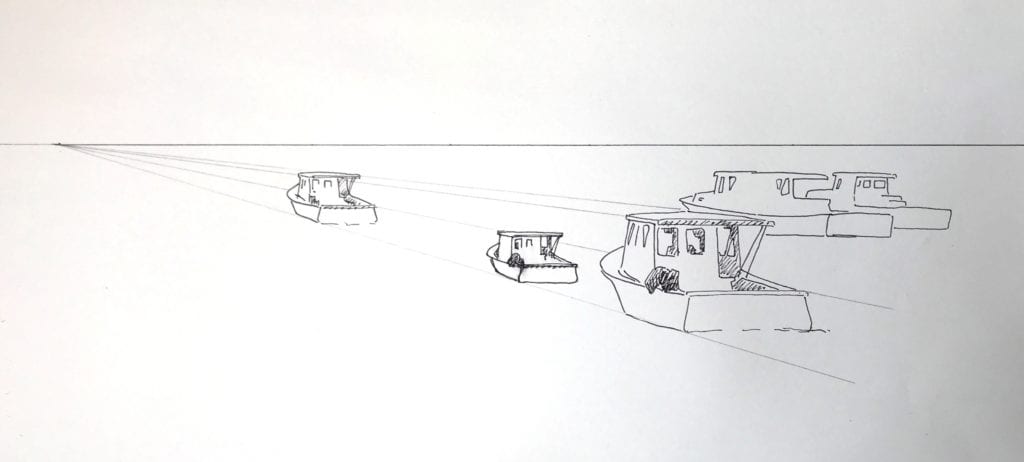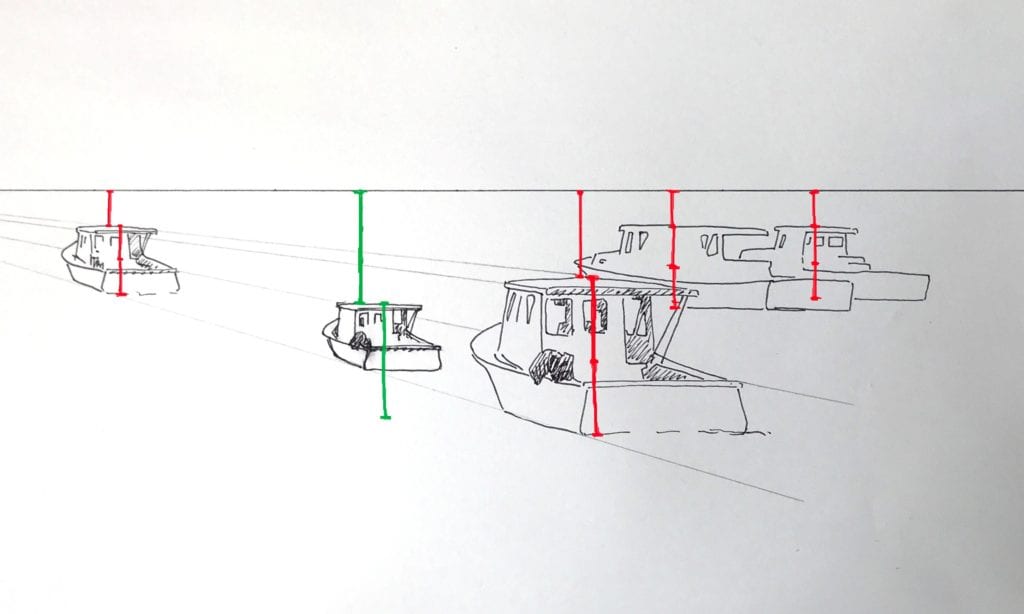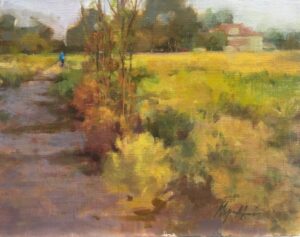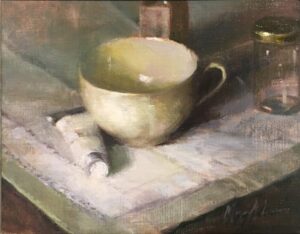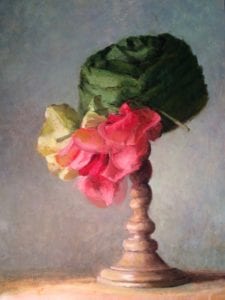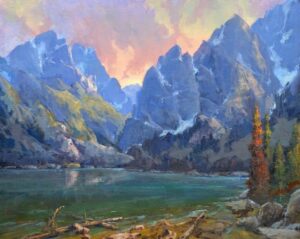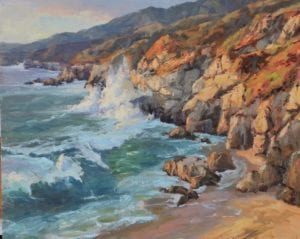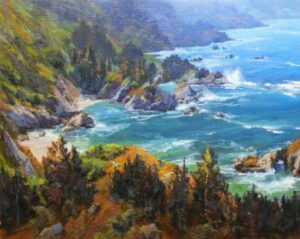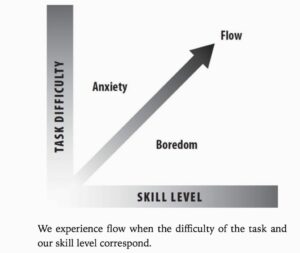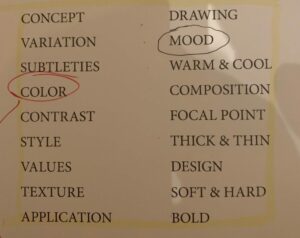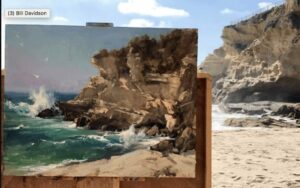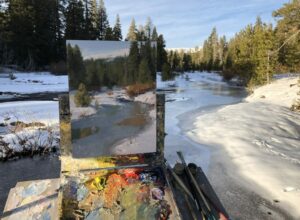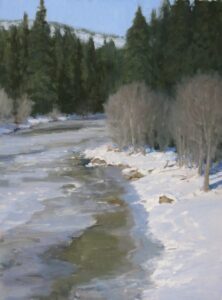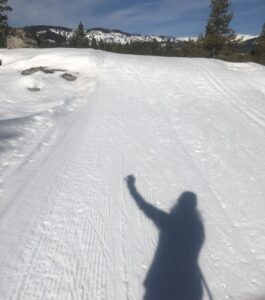I’ve noticed several artists adding
Familiarizing oneself with one’s subject is essential. In preparing to paint an unfamiliar model we need time to discover the model’s sense of identity and style, passions, achievements, worries and wishes, while with family we already have an understanding and familiarity with these facets. Once the artist has managed to persuade a child or spouse to sit for a portrait, and likely only for a limited time, kindling the sitter’s interest in the design will help everything go more smoothly. The artist can engage the model in some of the decisions; determining a natural position for the pose, incorporating a favorite treasure or symbolic object, and choosing a relevant, appropriate outfit. Although it’s not easy, inviting your model to hold an attitude,
“You compose because you want to somehow summarize in some permanent form your most basic feelings about being alive, to set down some sort of permanent statement about the way it feels to live now, today.” -Aaron Copland
Not only do I strive to accomplish a dialogue between myself and my muse,
In the last few
A few years ago, before I considered the significance of narrative portraiture I painted my first small portrait in oil of my teenaged daughter sitting on a stone wall in the morning sunlight. I only wanted to capture this lovely girl, whom I adore, bathed in morning sunlight.
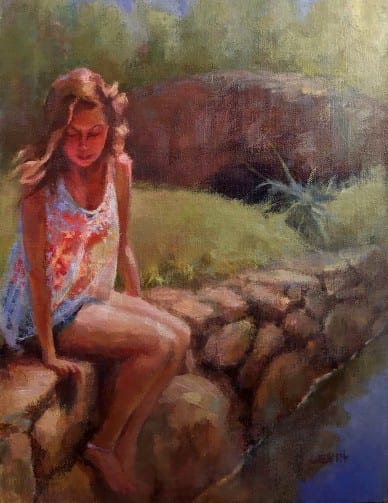
Oil on panel – 10″ x 12″
I managed to persuade my son to pose for a quick photo shoot, and I painted him in soft pastels. He was wheeling his motorcycle out into the bright sun. I hoped to capture his energy and passion for riding.
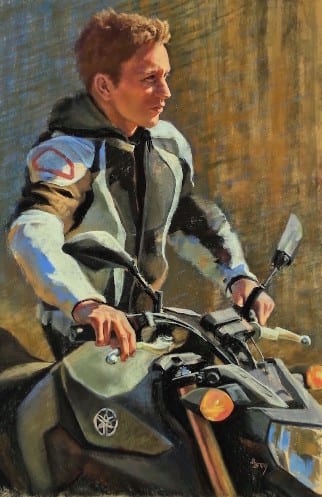
Patel on Pastelmat Board – 39″ x 26″
Years later I painted my older daughter again when she entered a more guarded phase in her young adulthood and I suggest this by painting her behind the back of the Windsor chair keeping the viewer at a distance.
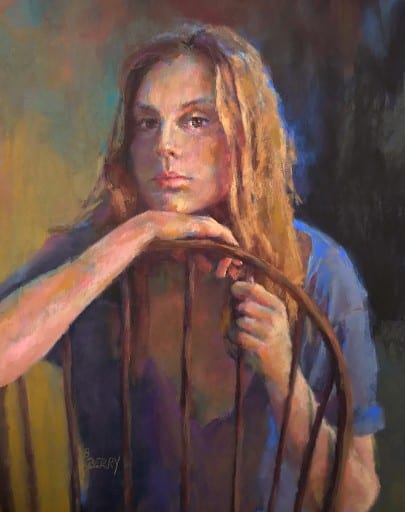
Pastel on Pastelmat Board – 22″ x 18″
Practicing in various different media can stretch your boundaries in mark making. Using the broadside of the pastel stick is a bit like using a large flat brush in oil painting. With either medium one has the option to mass in the larger shapes paying close attention to their corresponding colors and values after which one can begin defining the forms.
I painted my youngest in a September field. It was her first year of high school when it occurred to me she will soon be leaving the nest as my older children have.
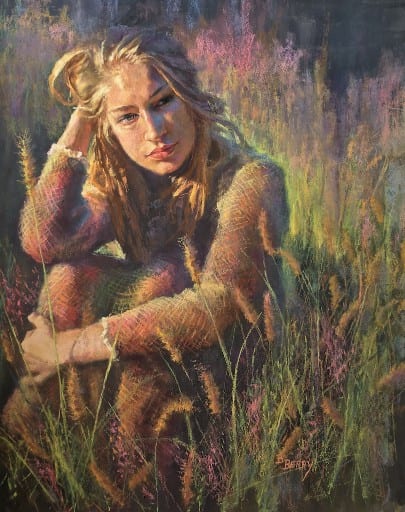
Pastel on Wallis archival paper – 30″ x 24″
I’ve painted my youngest twice in the last couple of months. Her incentive to pose? Gas money. My intention here was to suggest her quandary with the many valentines she receives.
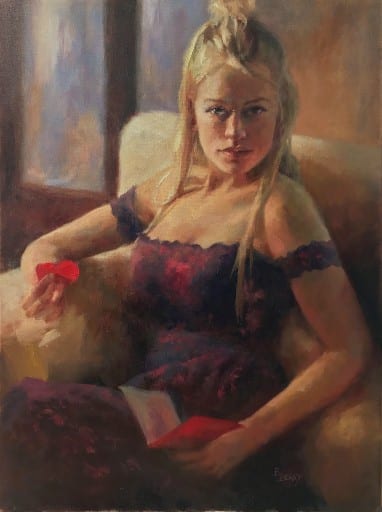
Oil on primed cotton canvas – 24″ x 18″
Although this figurative painting is not of my own child I have painted this young woman several times while she sat for several artists at a local studio. In this painting I imbued the scene with a mood which didn’t reflect the setting before me, illustrating how much play we have as artists to enhance atmosphere or emotion in our rendering.
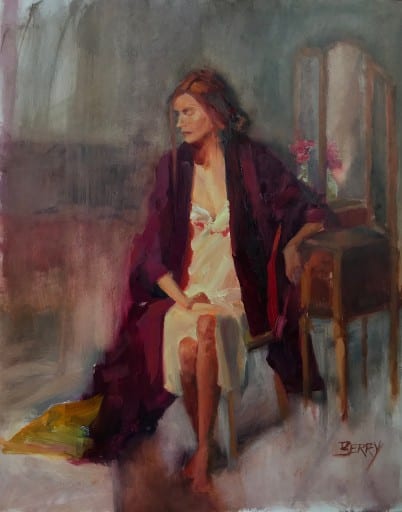
Oil on canvas – 20″ x 16″
Beware of this one thing when painting your own children – they can be painfully honest critics. They may not understand and appreciate an artist’s objective in the practice of painting and they don’t hold back when they see you’ve painted an eyebrow too thin or the nose a little too long. Some family members, however, don’t complain that their noses aren’t right:
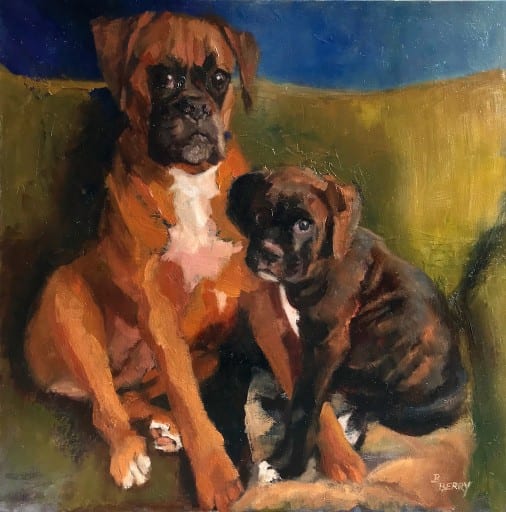
“Maple and Otis” by Barbara Berry
Oil on canvas – 18″ x 18″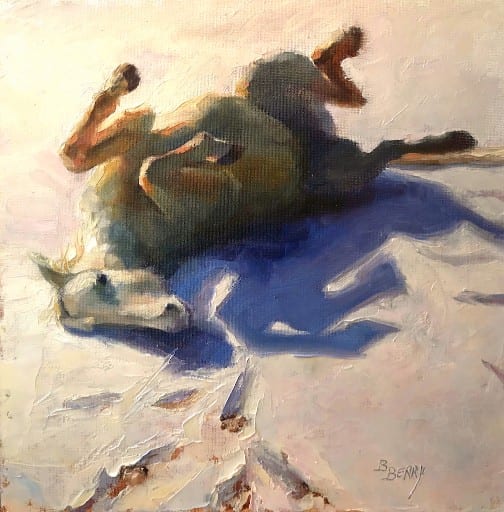
“Snow Angel” by Barbara Berry
Oil on canvas – 12″ x 12″
Practicing portrait painting from life with our own family members gives us an advantage in capturing the essence of our muse. While it can be challenging to get them to sit we’ll cherish the time painting someone with whom we feel a deep connection. After all, what is a more worthy focus than our clan of kindred spirits?
“There can be nothing exclusive about substantial art. It comes directly out of the heart of the experience of life and thinking about life and living life.” -Charles Ives
“Don’t only practice your art, but force your way into its secrets; art deserves that, for it and knowledge can raise man to the Devine.” -Ludwig van Beethoven
